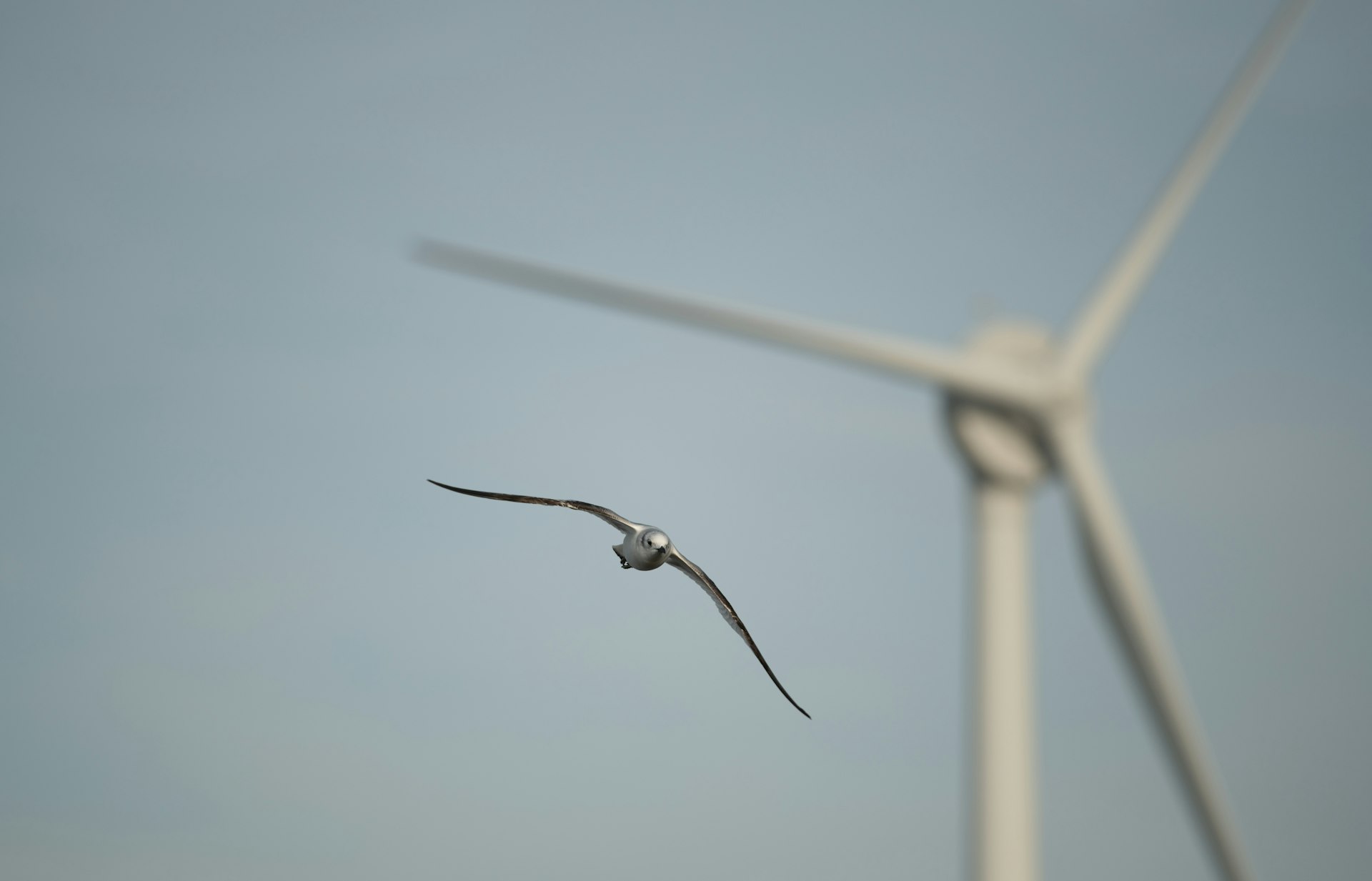
A New Lease on Life: Kittiwakes embrace modern living and join the national grid
A bit of Background
With ambitious targets like Net Zero by 2050, our coast and seas hold the potential for a resilient and decarbonised future. The Crown Estate play a unique role in catalysing the delivery of net zero and nature recovery, and balancing these priorities is of the utmost importance. The UK is a global leader in offshore wind however, as well as being critical to the UK’s energy transition, our seabed and seas support important natural habitats and wildlife. As such the expansion of offshore energy production can pose a risk to marine wildlife, including seabirds, if the expansion is not managed correctly. One seabird that is thought to be particularly sensitive to offshore wind farm developments is the black-legged kittiwake, but a closer look at a Walney Two offshore wind farm may tell a different story. As a 2023 North West Marine Futures intern, I spent six months researching the kittiwakes that have made Walney Two offshore substation their home.

What are Kittiwakes?
Black-legged kittiwakes are gentle-looking, small gulls with yellow bills and dark eyes – aka not the ones that steal your chips. They have a grey back with a white underneath, black tipped wings and, as I’m sure you’ve already guessed, they are characterised by their black legs. Kittiwakes feed at sea, on small fish found near the surface of the water and are predominantly found nesting on sea cliffs, using very narrow horizontal shelves and ledges that allow them to avoid predators. But, within recent decades, under the right environmental conditions, kittiwakes have been observed colonising structures, such as buildings and piers that have similar features to natural nesting sites. These sites have been readily adopted by kittiwakes in locations where natural breeding sites are limited.
Kittiwake Pressures
Despite being one of the most numerous species of gull in the world, kittiwakes have experienced a 40% population decline since the 1980s.
Kittiwakes are facing significant challenges with climate change and pressures from commercial fisheries causing food scarcity. Offshore wind farm developments may also impact kittiwake populations. Turbines have the potential to limit access to foraging areas and terrestrial breeding grounds, through the barrier effect – this occurs when, in order to avoid turbines, birds need to take a longer route around the farms to reach nesting and feeding grounds, increasing flight distance and energy expenditure. Secondly, some research suggests that kittiwakes are sensitive to collision risk with turbines. However, data on kittiwake wind farm interactions remain scarce and largely dependent on theoretical modelling. On top of this, bird flu has greatly devastated kittiwake populations causing mass mortality events and reduced reproductive success.
The combined impacts of these factors are leading to the overall decline in kittiwake populations and they are now listed as vulnerable on the IUCN Red List and the Birds of Conservation Concern Red List, with frequent and widespread breeding failure now being observed throughout the UK.
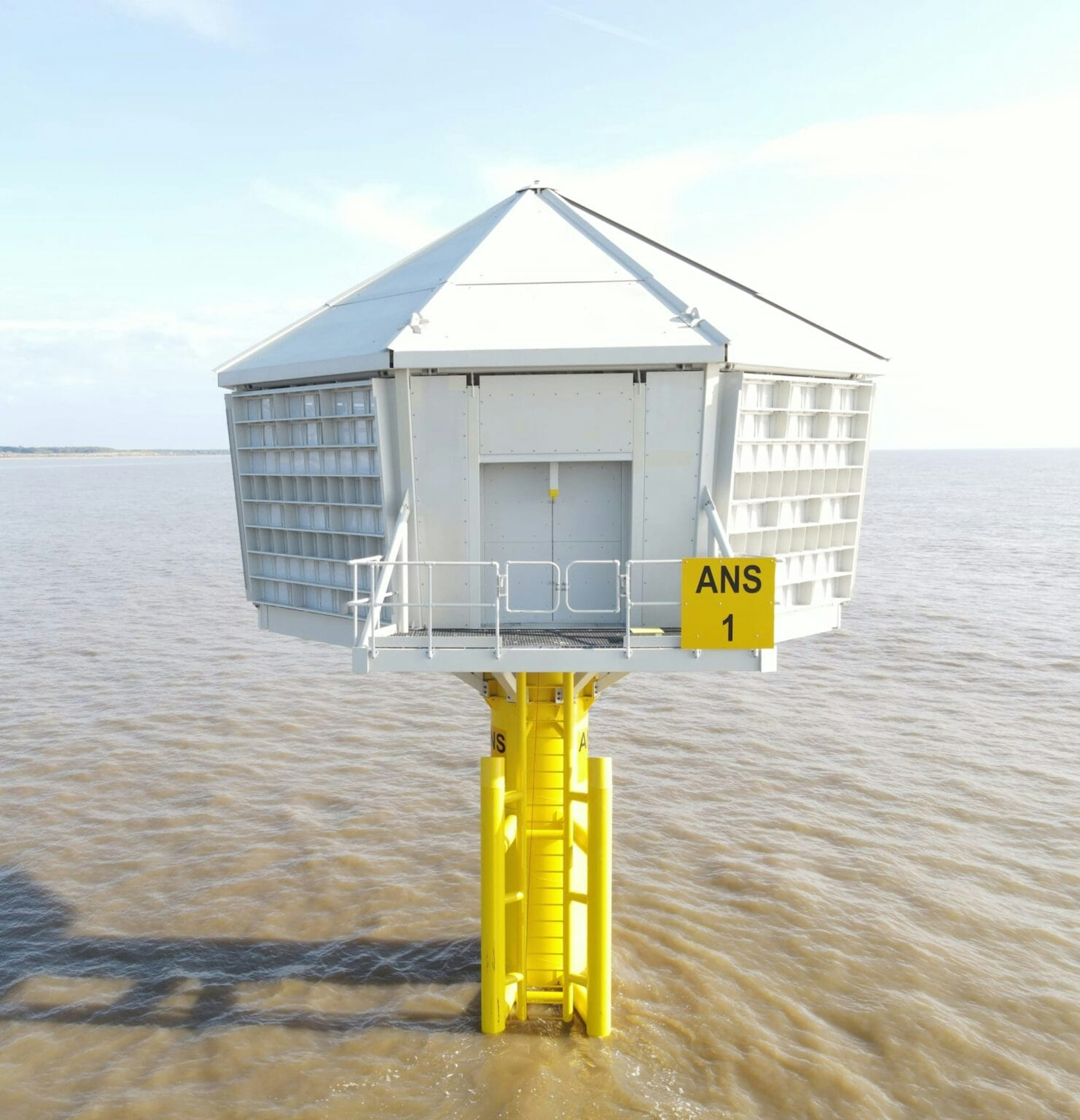
Kittiwakes on Offshore Structures
A potential opportunity for kittiwake population recovery comes in the form of offshore nesting sites. With the concerns over the impact of offshore turbines, many offshore wind developers are putting in place compensatory measures to mitigate their impact on kittiwake populations. These come in the form of artificial nesting structures, otherwise known as kittiwake hotels. It is thought that offshore structures that fulfil kittiwake nesting requirements, could help bolster populations by providing additional benefit like being closer to foraging sites and further away from land-based predators. These hotels may provide a vital refuge to support kittiwake conservation.
Walney Two offshore substation
Walney Two offshore wind farm is located approximately 15km from the coastline of Walney island in south Cumbria. Comprising of 51 turbines and positioned within a designated Marine Conservation Zone (MCZ), the windfarm was developed and operated by Ørsted and has been fully operational since 2012.
Recently, observations from Ørsted technicians have found a kittiwake colony nesting on Walney Two offshore substation – the platform that helps transmit electricity to the shore. Due to the nature of offshore structures, there remains a lack of data on kittiwake windfarm interactions as sites are difficult to access and survey. This colony appears to be in the early stages of establishment and so provides a great opportunity to better understand kittiwake population dynamics.
Working with Ørsted, Natural England and The Crown Estate, Cumbria Wildlife Trust has been researching the Walney Two kittiwake colony, monitoring the population, investigating conflicts with site operations and potential conservation opportunities to allow both the birds and wind farm to happily co-exist.
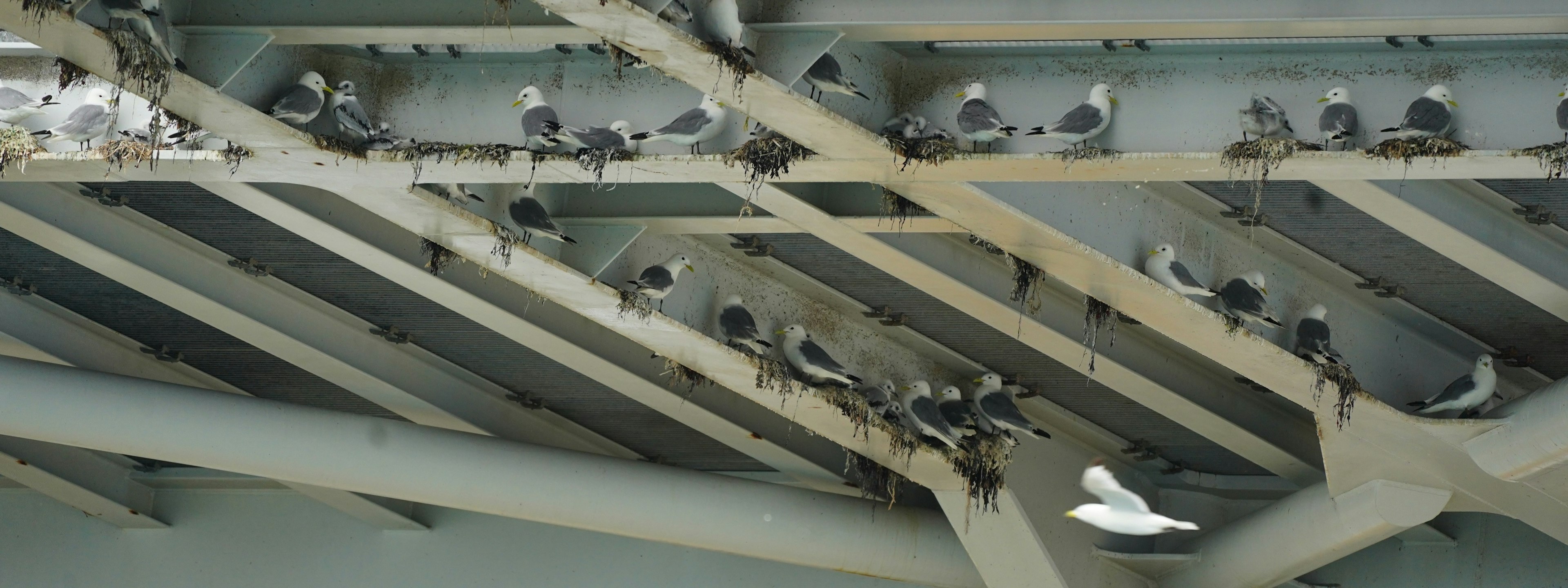
What did we find?
We found a productive and stable colony nesting on the Walney Two offshore substation with a whopping 409 individuals and 155 nests. The colony had a much higher breeding success than that of the local colony nesting on the cliffs of St Bees Head which suggests there may be some benefits to living out at sea!
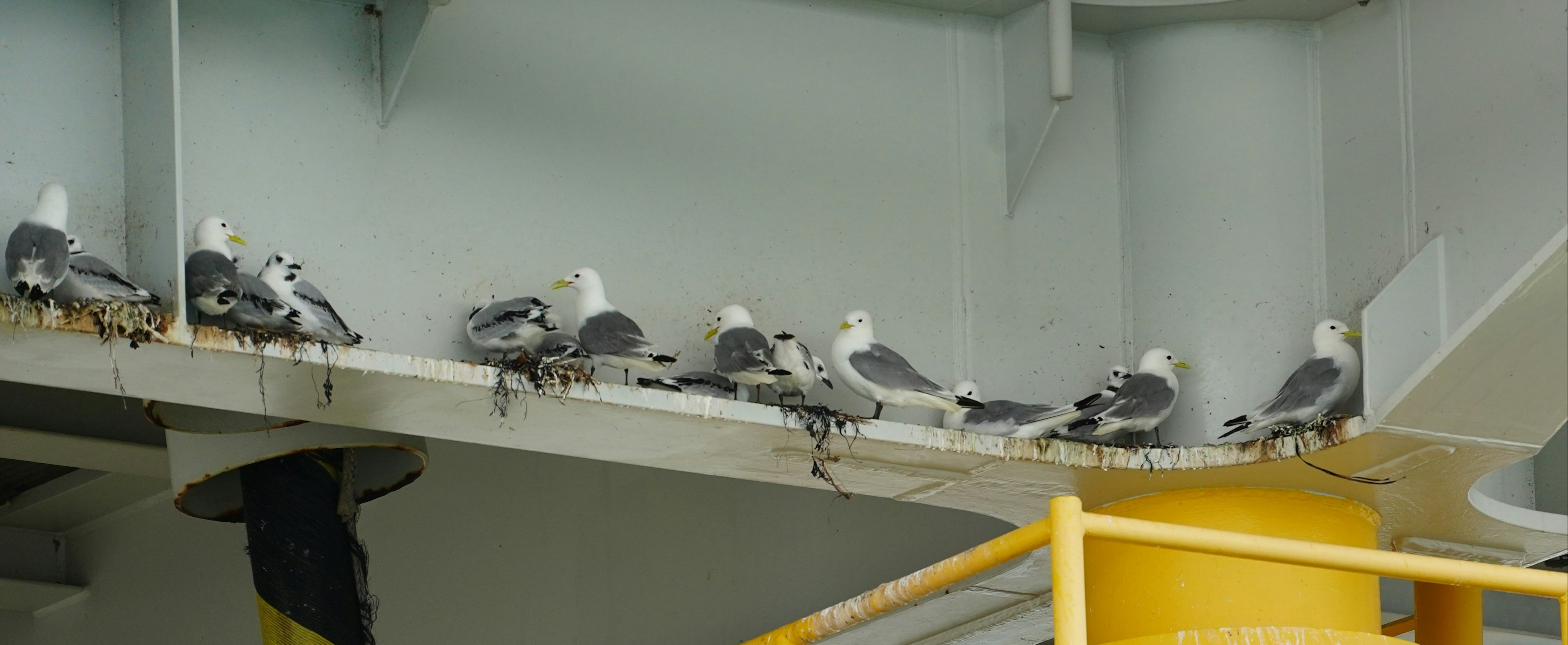
Kittiwakes usually use wet mud, grass, and twigs to build their nests, helping to protect young chicks and eggs from harsh weather. However, the quality of the nests seen on the substation left a lot to be desired, mostly consisting of a couple of bits of seaweed stuck down by lots of guano – aka bird poop! This is likely because the substation is too far away from the shore where they would normally forage for nest materials, so alas, they just have to make do with what they’ve got.
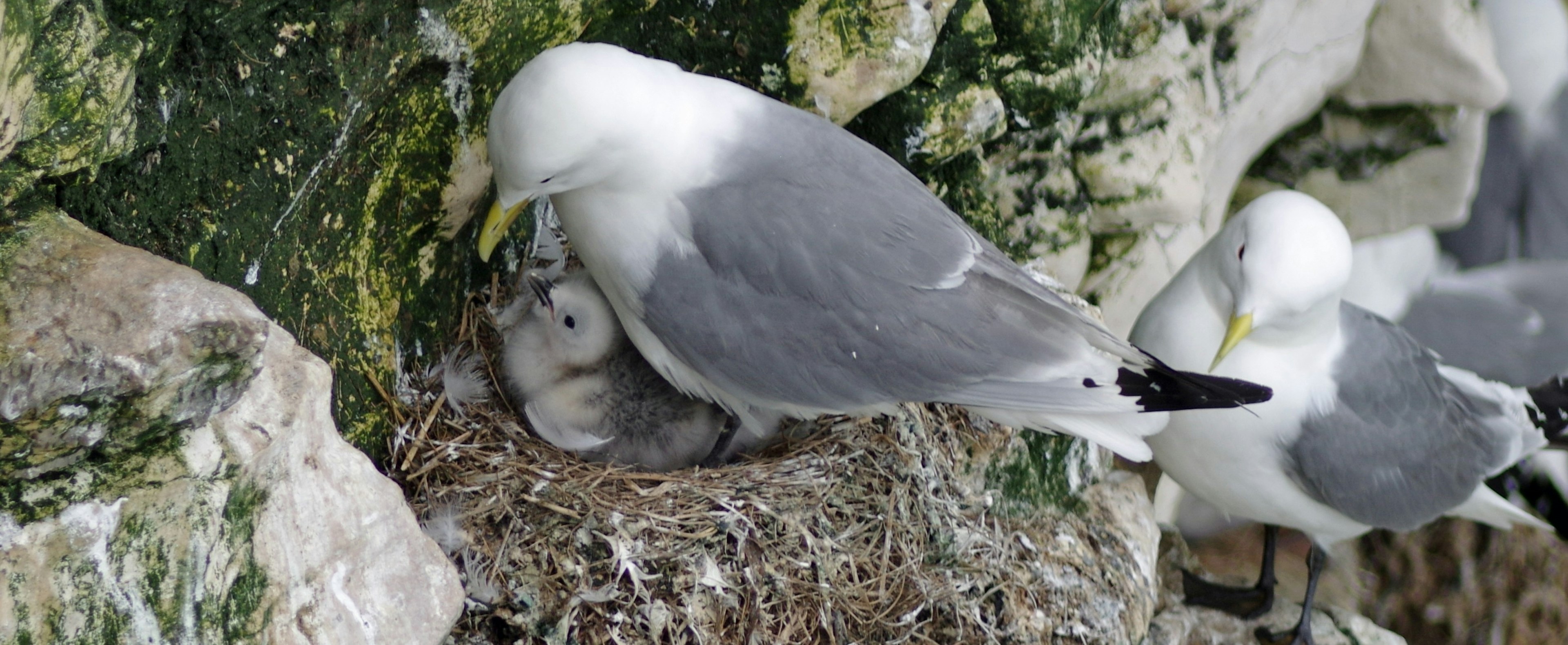
We also found most birds preferred nesting on the underside of the substation. This is likely due to the weather. Research suggests kittiwakes don’t like getting too hot and wind and rain can damage nests so the underside of a platform may be an ideal place to settle as it is shady and protected from the elements. This information could help inform future design decisions for kittiwake hotels.
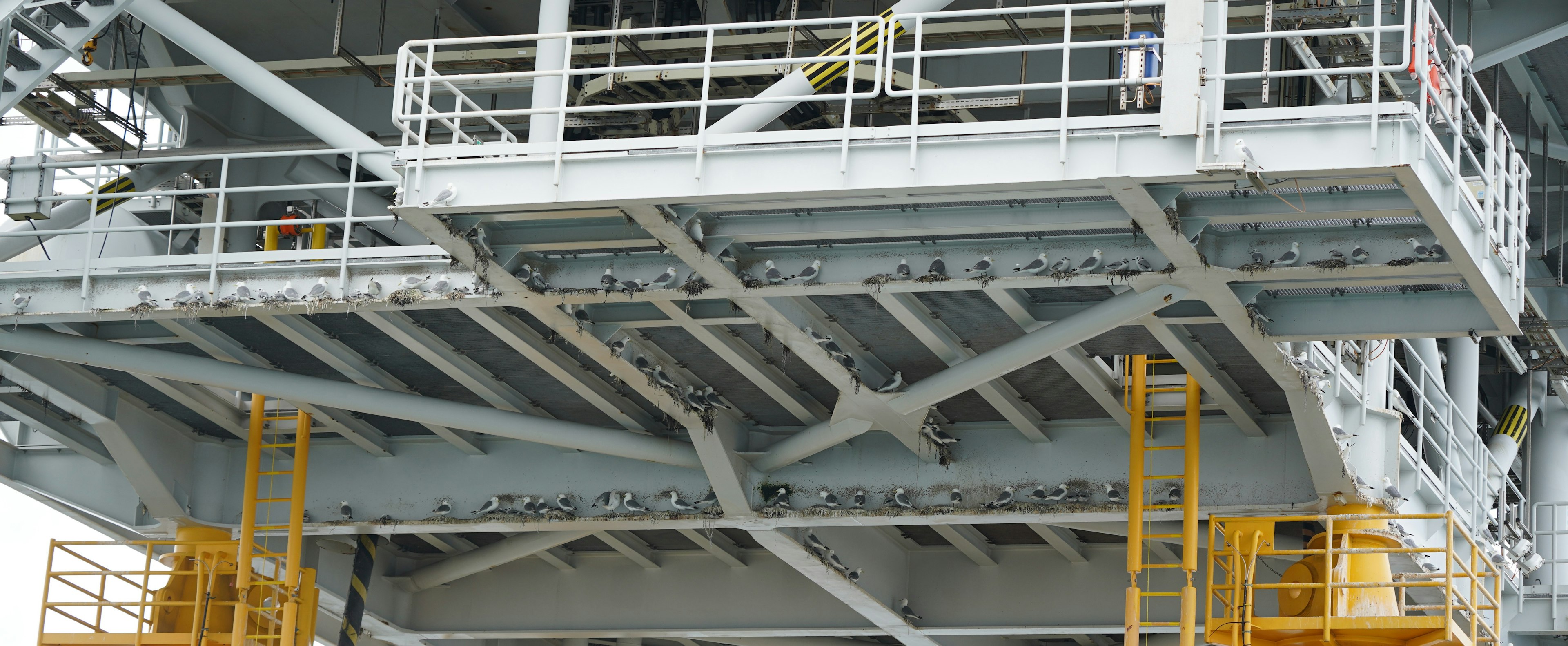
What Next?
Our study provides some baseline data into these kittiwakes and we hope that monitoring will continue through the next breeding season, which could provide insight into interannual variation and a greater understanding into kittiwake wind farm interactions. Additionally, tracking studies could take place to better understand where kittiwakes are foraging and how they navigate the wind farms. Our observations also suggest that kittiwakes may benefit from the provision of additional nesting materials at wind farm substations, to help support colonies and enhance the nest quality.
Final Thoughts
After closely observing the surprising and promising kittiwake colony on Walney Two offshore substation, it's evident that even unconventional habitats can become crucial sanctuaries for struggling wildlife. While the makeshift nests might not meet the usual standards, they symbolize the adaptive nature of these birds.
Our findings highlight the potential for collaboration between conservationists and wind farm developers. This success story from Walney Two showcases the power of research and collaboration in understanding the impact of offshore wind farms on sensitive seabird populations. With continued dedication and innovative strategies, we can foster coexistence between renewable energy development and wildlife conservation, paving the way for a more sustainable future.
Fun facts
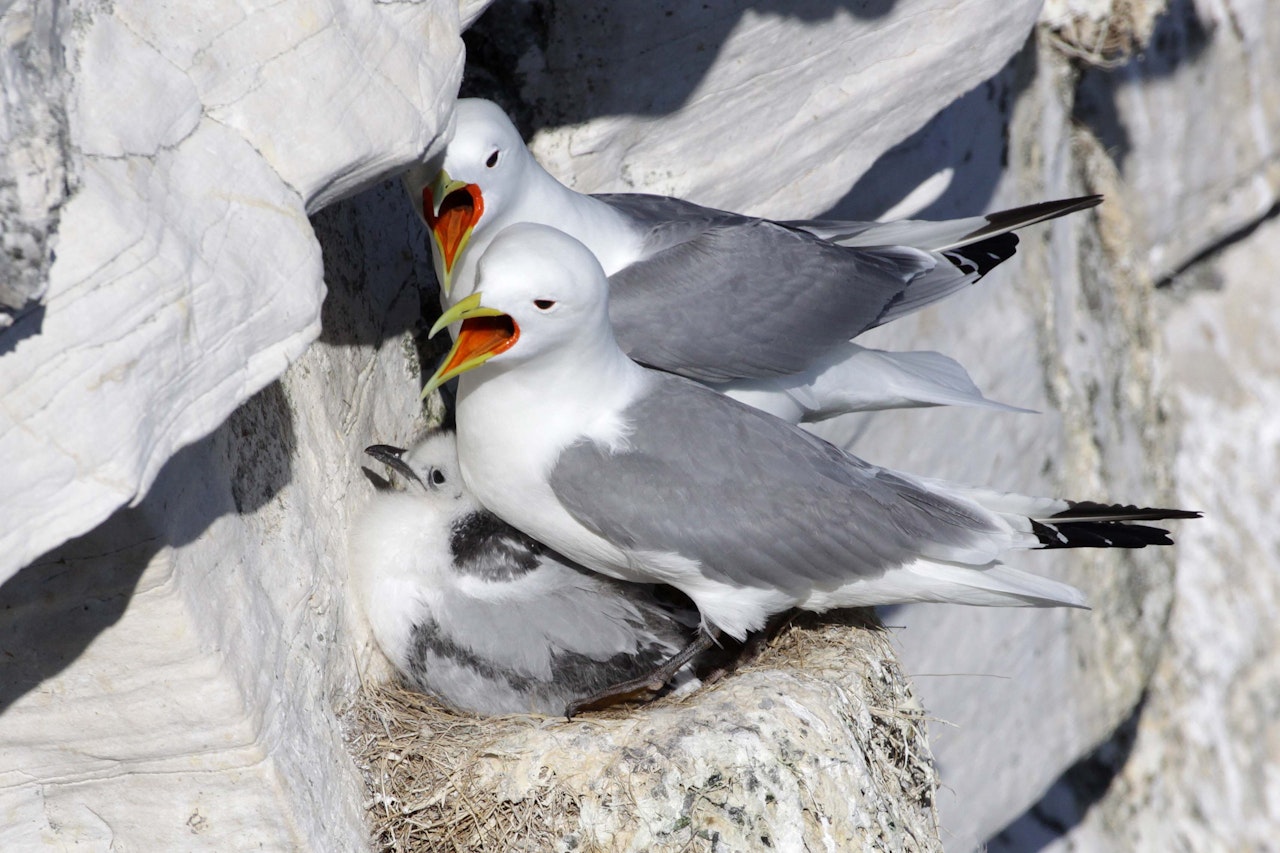
Kittiwakes get their name from their calls – “kittee-wa-aaake!”
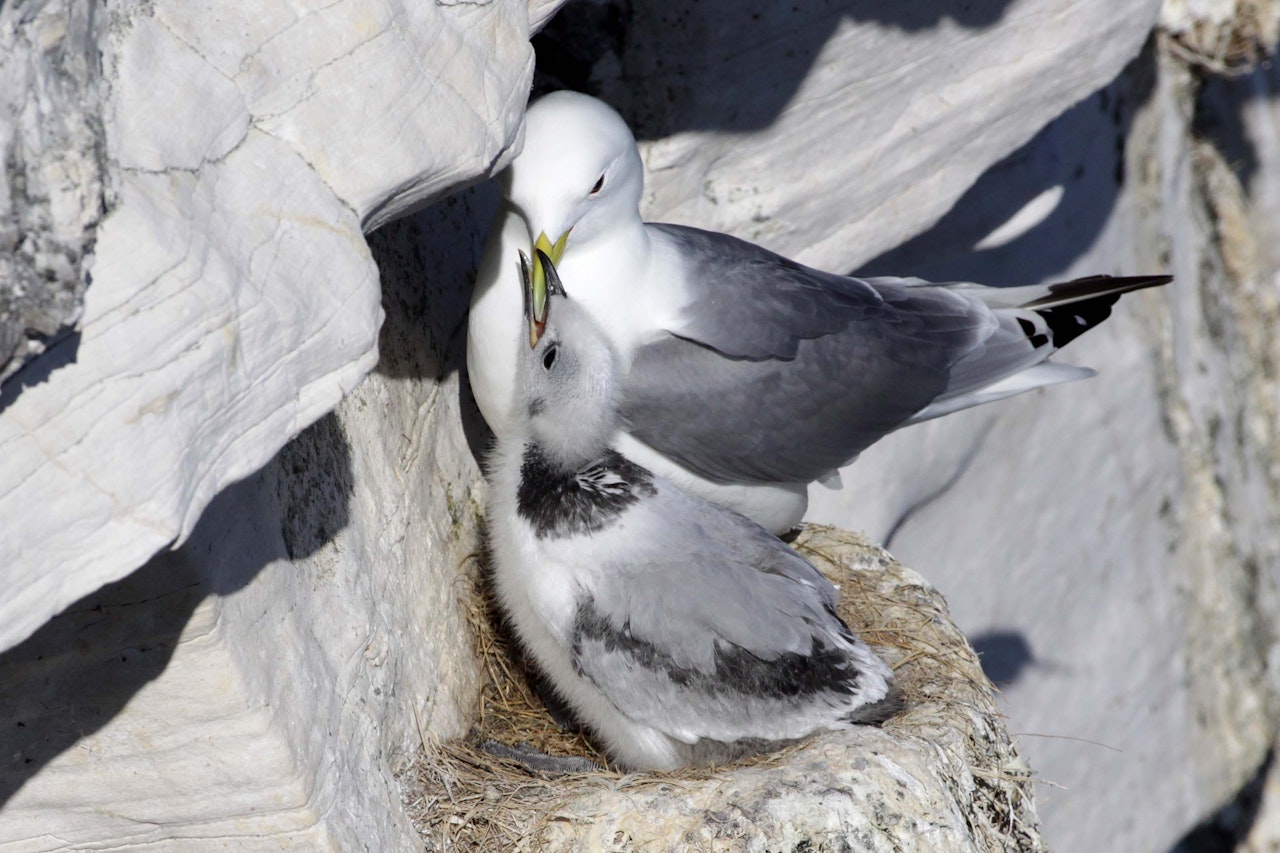
Kittiwake chicks are one of the few chicks that are white at birth. This is because they nest on cliffs which means they do not require camouflage like other chicks.
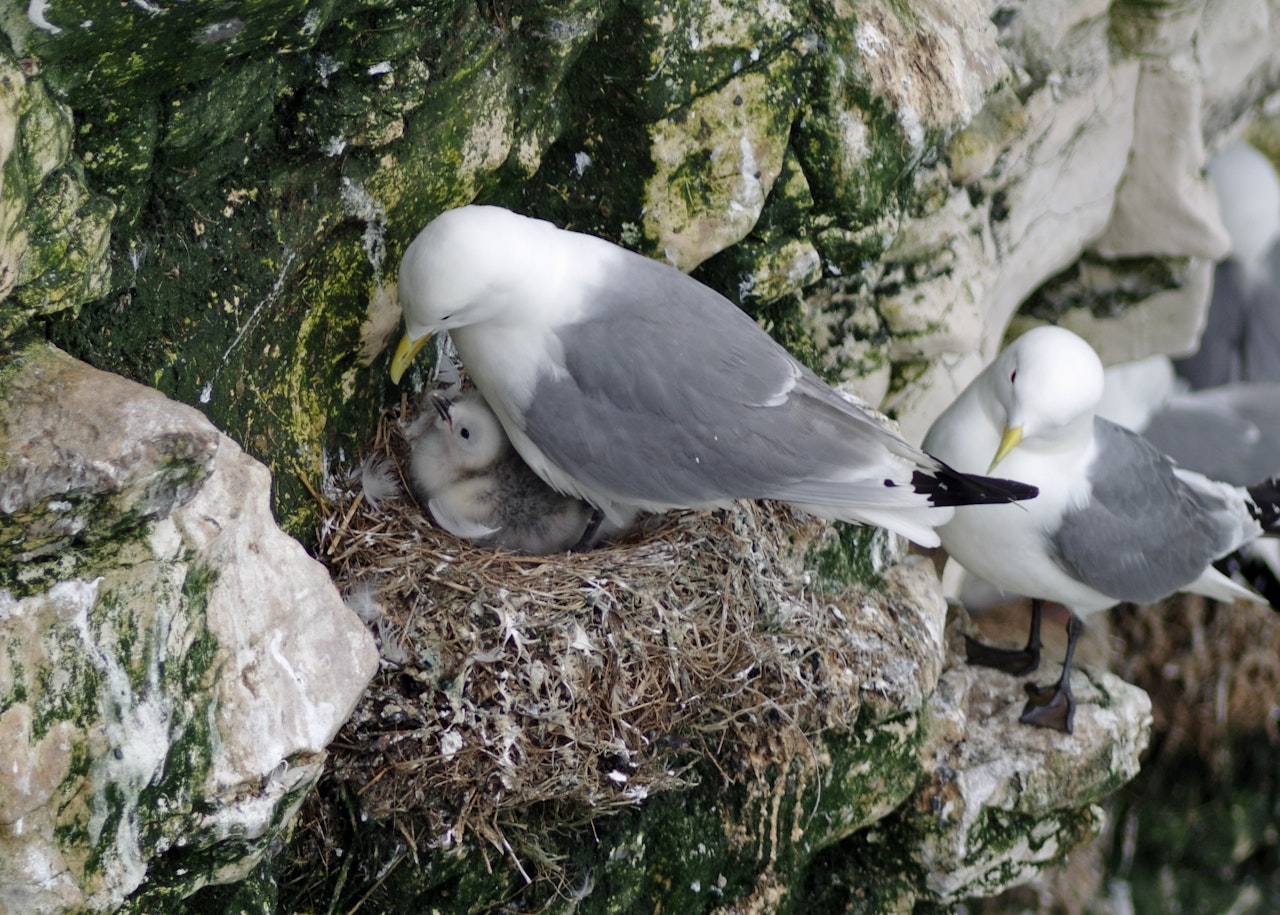
Kittiwake chicks instinctively know to stay still so they don’t fall off their cliff-side nest.
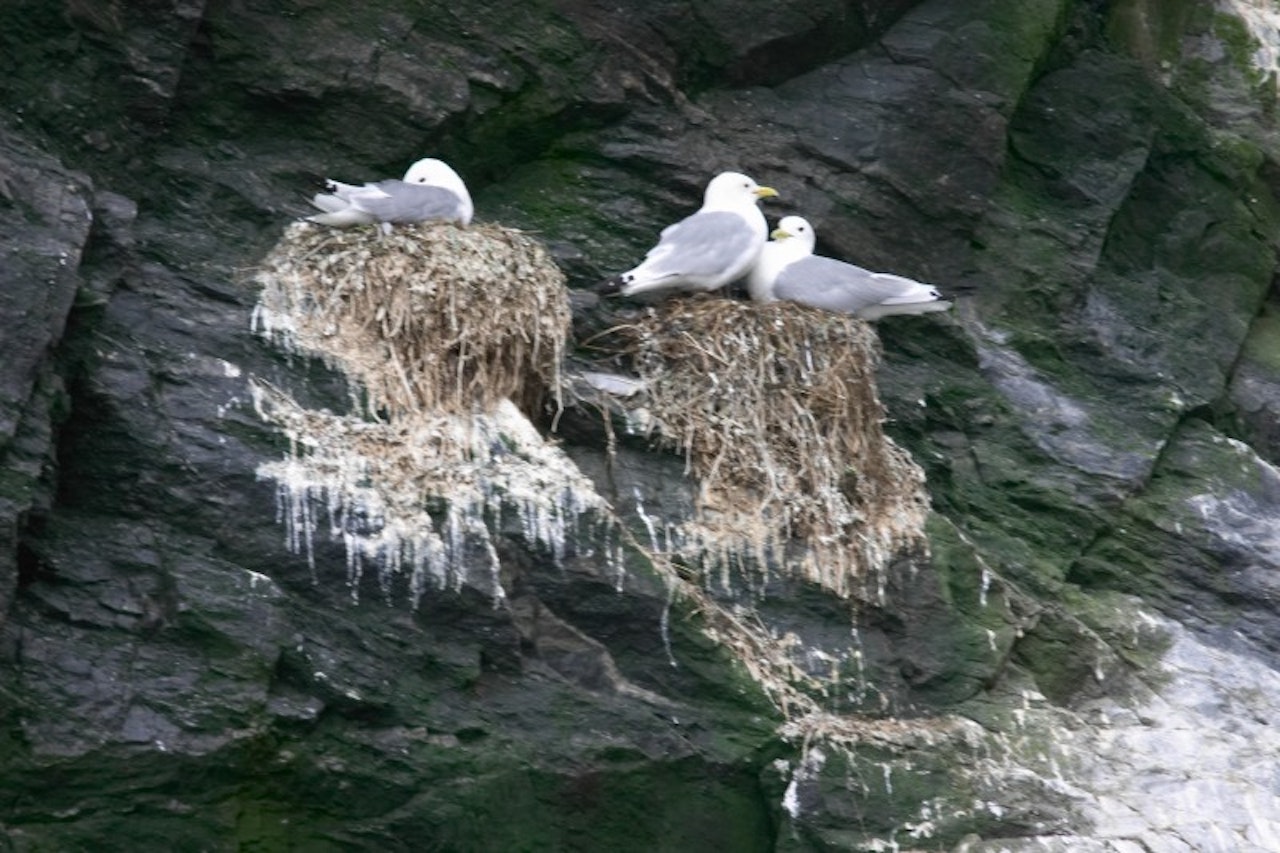
Kittiwakes are the only gull species in the world to nest on cliffs.
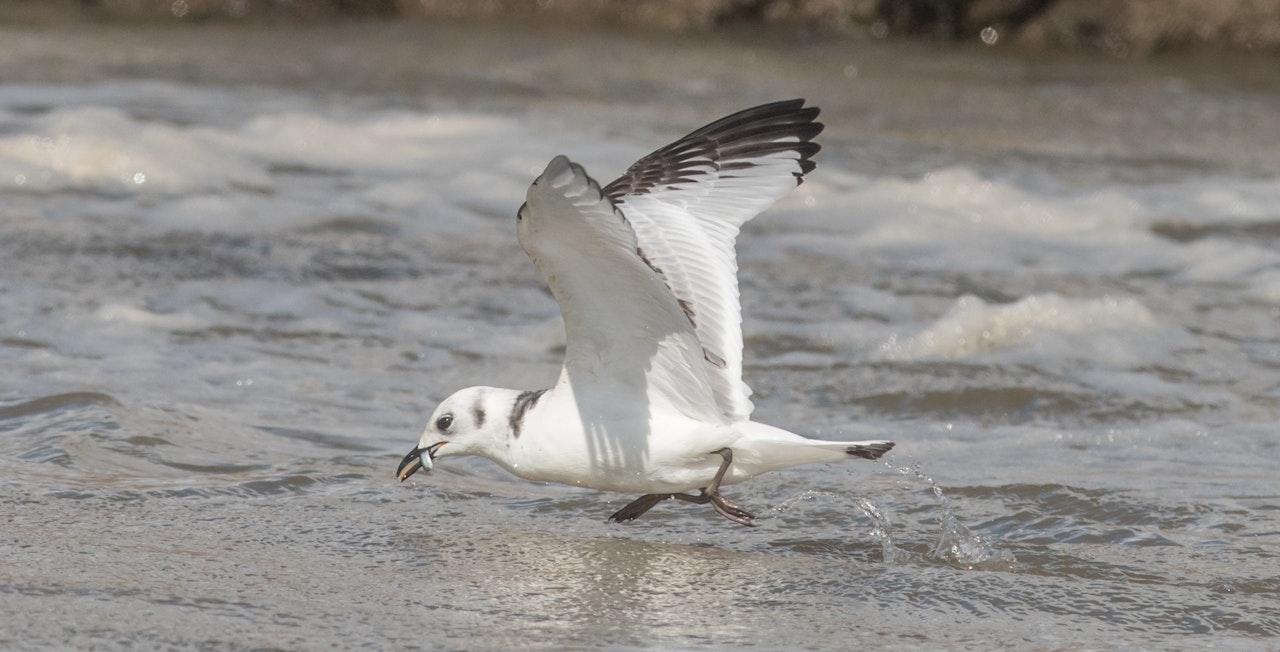
Kittiwakes are the most abundant type of gull in the world.






